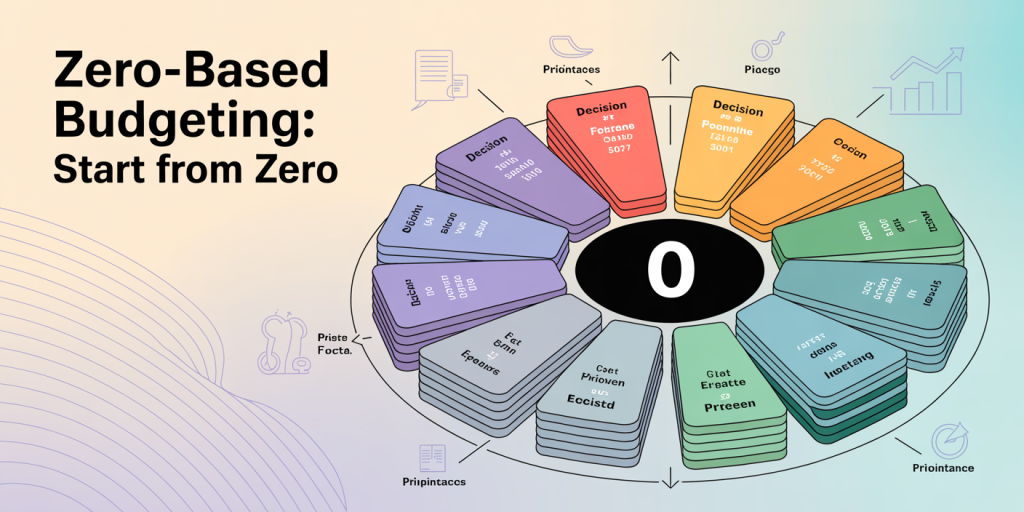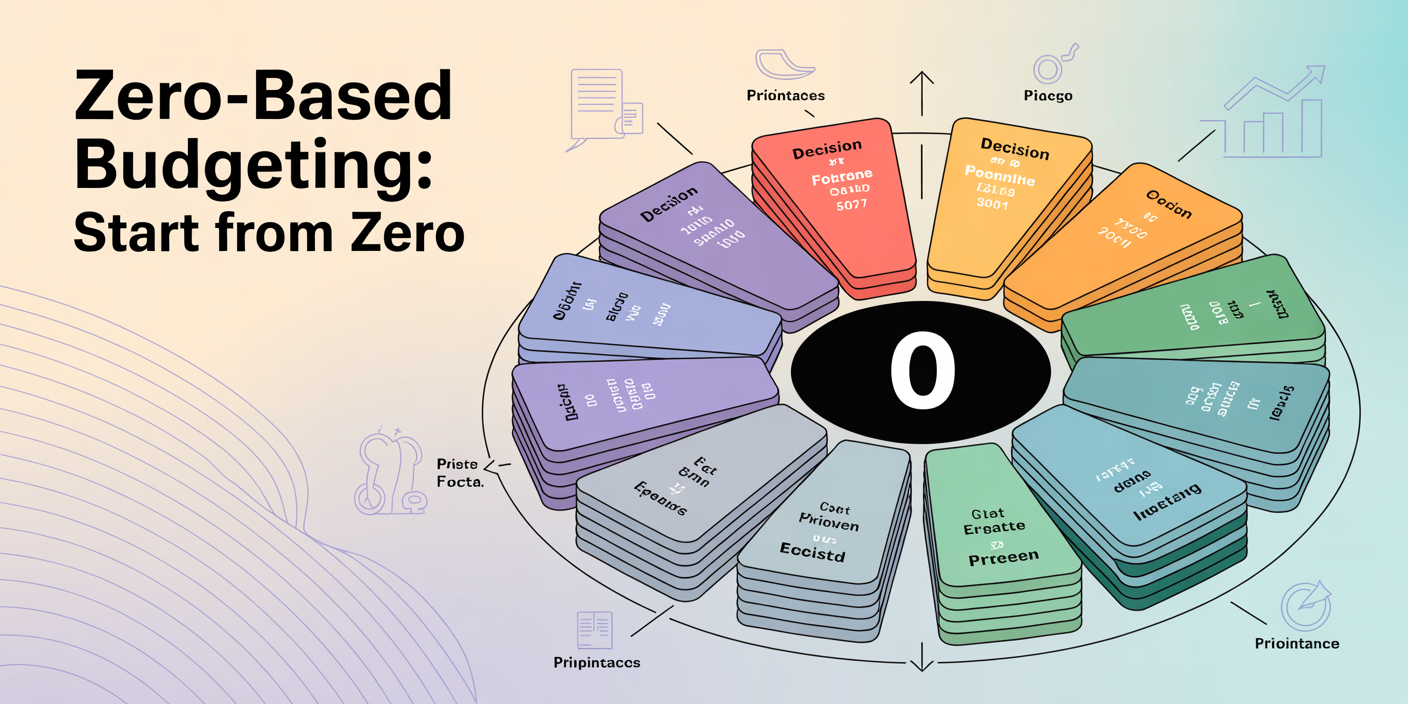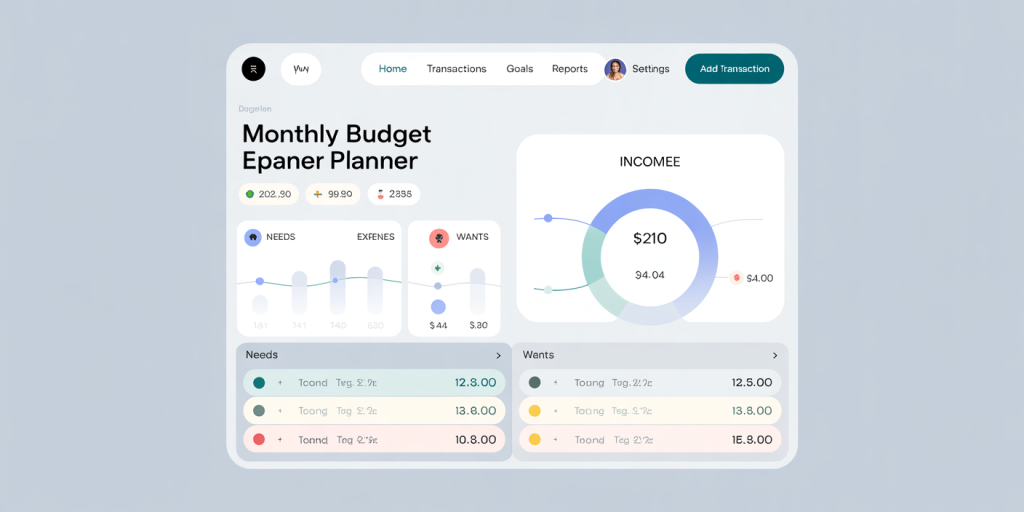In today’s fast-paced financial environment, businesses and individuals alike strive to optimize every dollar spent. Traditional budgeting methods often rely on historical expenditures, which may perpetuate inefficiencies and unexamined costs. Zero-based budgeting (ZBB) offers a refreshing alternative by demanding a detailed justification of all expenses from ground zero each budget cycle. This method empowers organizations to reallocate resources effectively, cut unnecessary expenses, and align spending with current priorities rather than past habits.
Zero-based budgeting originated in the 1970s and has since been embraced by various industries as a robust financial planning approach. By starting each budgeting period at zero, decision-makers avoid the trap of incrementalism — where prior budgets are simply adjusted up or down without a fundamental review. The result is a nimble and responsive budget that reflects real needs, strategic goals, and market realities. This article explores the concept of zero-based budgeting, provides clear guidance for implementation, and examines how both individuals and companies benefit from this disciplined approach.

Understanding Zero-Based Budgeting: Core Principles
At its essence, zero-based budgeting requires that every expense allocation must be justified as if starting from scratch, ignoring previous budgets. Instead of assuming a baseline, decision-makers evaluate every cost, project, or department anew. This rigorous evaluation often involves breaking down expenses into “decision packages,” each with a clear description, expected outcomes, and cost analysis.
A practical example of this principle can be seen in a manufacturing company revisiting its marketing budget. Rather than automatically approving last year’s $500,000 spend, the marketing team must submit a detailed proposal justifying each element—such as $150,000 for digital ads, $100,000 for events, and $50,000 for printed materials—demonstrating how each aligns with business goals, projected ROI, and alternative options.
An essential feature of ZBB is the prioritization of expenditures. When resources are limited, decision-makers rank packages from highest to lowest priority, ensuring that the most impactful initiatives receive funding. This prioritization fosters strategic allocation and eliminates automatic approval of low-value or redundant expenditures.
Benefits of Zero-Based Budgeting for Organizations and Individuals
Zero-based budgeting offers numerous advantages that extend beyond mere cost-cutting. One key benefit is enhanced financial transparency. By requiring detailed justification for every expense, organizations gain a granular understanding of where money is spent and why. This transparency can uncover hidden costs or outdated activities that persist in traditional budgets by default.
For individuals, zero-based budgeting encourages mindful spending and better financial control. Instead of relying on approximate estimates or habitual expenses, individuals create detailed plans allocating every dollar of income toward specific purposes like savings, debt repayment, or leisure. According to a 2022 survey by NerdWallet, people who adopt detailed budgeting strategies, such as ZBB, are 30% more likely to reach their savings goals within a year.
Another compelling benefit is improved resource optimization. Businesses that have implemented zero-based budgeting report significant cost savings. Kraft Heinz, for instance, famously used ZBB to cut $1.7 billion in costs annually by re-evaluating all expenses from scratch and eliminating unnecessary costs. These savings were then reinvested in growth areas like innovation and marketing, bolstering profitability and competitive advantage.
Step-by-Step Guide to Starting Zero-Based Budgeting
Implementing zero-based budgeting requires systematic planning and effort, particularly for organizations accustomed to traditional budgeting methods. Below is a practical roadmap to get started:
1. Define Budget Objectives and Scope
Begin by clearly outlining the goals of the budgeting process. Are you looking to reduce expenses, reallocate funds to growth initiatives, or increase financial transparency? Defining objectives guides how comprehensive and detailed the zero-based review needs to be.
For example, a mid-sized retailer focusing on expansion might prioritize reallocating budgets to store renovations and digital transformation over administrative costs. Choosing which departments or cost centers to include in the initial cycle is crucial, especially to avoid overwhelming complexity.
2. Identify and Categorize Expense Drivers
Next, break down your budget into categories—operational, capital expenses, marketing, salaries, etc. Each category is further dissected into decision packages requiring justification. Using data and historical insights can help identify high-cost items worth scrutinizing.
In a personal finance scenario, this might involve categorizing expenses into housing, transportation, groceries, entertainment, and savings. Each category’s expenses are then listed and questioned for necessity and efficiency.
| Expense Category | Example Items | Justification Questions |
|---|---|---|
| Marketing | Digital Ads, Sponsorship | What is the ROI? Are cheaper alternatives available? |
| Operations | Utilities, Maintenance | Can costs be reduced through efficiency? |
| Personal Finance | Rent, Streaming Services | Is this essential? Can similar value be obtained for less? |
3. Develop Alternative Budget Scenarios

Prepare multiple budget scenarios reflecting different prioritization levels. For instance, scenario A might fully fund all existing projects, while scenario B focuses only on the highest return investments, and scenario C takes a conservative cost-cutting stance.
Companies can use software tools to simulate these scenarios and assess their impact on financial performance. Individuals might adjust discretionary spending line items to evaluate how much they can increase savings or debt payments.
4. Engage Stakeholders in the Review Process
Zero-based budgeting requires collaboration and input from department heads, finance teams, and sometimes external consultants. Transparent communication ensures buy-in and realistic proposals. Stakeholders should explain their justifications clearly, and finance teams should verify assumptions with current market or cost data.
Family budgeting also benefits from involving all members, encouraging shared responsibility and transparency around money management goals.
Common Challenges and How to Overcome Them
While zero-based budgeting promotes financial discipline, it also presents certain challenges. First, the process can be time-consuming and resource-intensive, especially for large organizations with complex spending structures. The need to justify every expense might overwhelm teams and delay approvals.
To mitigate this, companies often implement ZBB gradually, starting with high-cost departments or pilot projects before expanding. Automation tools, like budgeting software with workflow functionalities, can simplify data collection and analysis.
Another challenge is resistance to change. Employees accustomed to incremental budgeting might push back due to perceived increased scrutiny or fear of budget cuts. Successful ZBB adoption requires cultural shifts emphasizing transparency, objective evaluation, and alignment with strategic goals.
Training sessions, clear communication of benefits, and leadership support are critical in managing resistance. Showcasing early successes or cost savings also helps build momentum and acceptance.
Real-World Applications: Case Studies Demonstrating ZBB Success
Many corporations have demonstrated the power of zero-based budgeting in practice. A notable example is Unilever, which adopted ZBB in 2016 with the aim of improving efficiency and investing in innovation. By requiring every department to start budgeting at zero, Unilever identified $1 billion in savings in the first year alone, which was then reinvested in new product development and market expansion.
On a smaller scale, a family in New York City leveraged zero-based budgeting to tackle mounting credit card debt. By creating a month-by-month budget starting from zero, allocating income first to essentials and debt repayment, they cut discretionary spending by 40%. Within 18 months, the family cleared $15,000 in credit card debt and built an emergency fund, showcasing how ZBB principles facilitate financial recovery and planning.








